After eight hours of testimony before the Senate’s Committee of the Whole on Tuesday, one thing was absolutely clear: St. John residents and senators all agree that a new school is needed to replace the hurricane-damaged Julius E. Sprauve School in Cruz Bay.
In spite of the consensus, the probability remains murky that the Senate will approve legislation to acquire land for a new school when it comes up for a vote on July 28.
In June, Gov. Albert Bryan Jr. proposed legislation to the 35th Legislature for a land swap between the territory and the National Park Service that will provide a mid-island site for the construction of a K-12 school on St. John.
The proposal — decades in the making — would provide for an exchange of properties of roughly equal value. A land swap is necessary because the National Park Service is prohibited from selling or donating park land without Congressional approval.
Under the proposed legislation, the Government of the Virgin Islands would give the National Park Service title to Whistling Cay, a 17.97-acre island off Mary Point on the north shore of St. John. The cay, which lies within the boundaries of the Virgin Islands National Park, is a wildlife sanctuary and contains historic ruins of an old guardhouse.
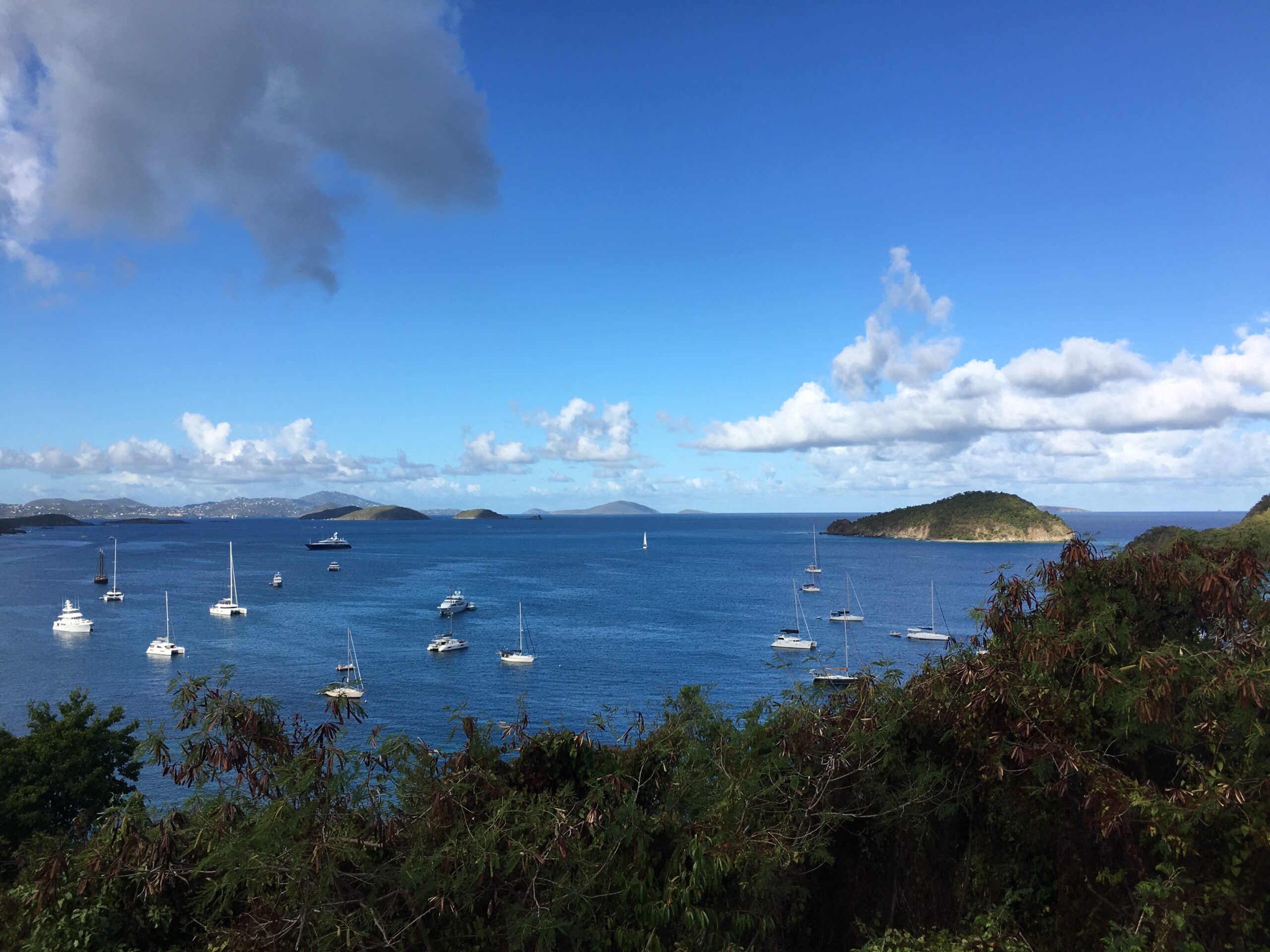
In exchange, the National Park Service would give the territory 11.3 acres of property donated to the VINP in 1968 by the Bishop family, more than 20 years after the park was established. (Unlike most of the land within the park, the deed for the Bishop property states that the land can be used for a public purpose if approved by the Secretary of the Interior.) St. John residents packed the Legislative Annex in Cruz Bay on Tuesday to hear impassioned testimony both for and against the proposed land swap.
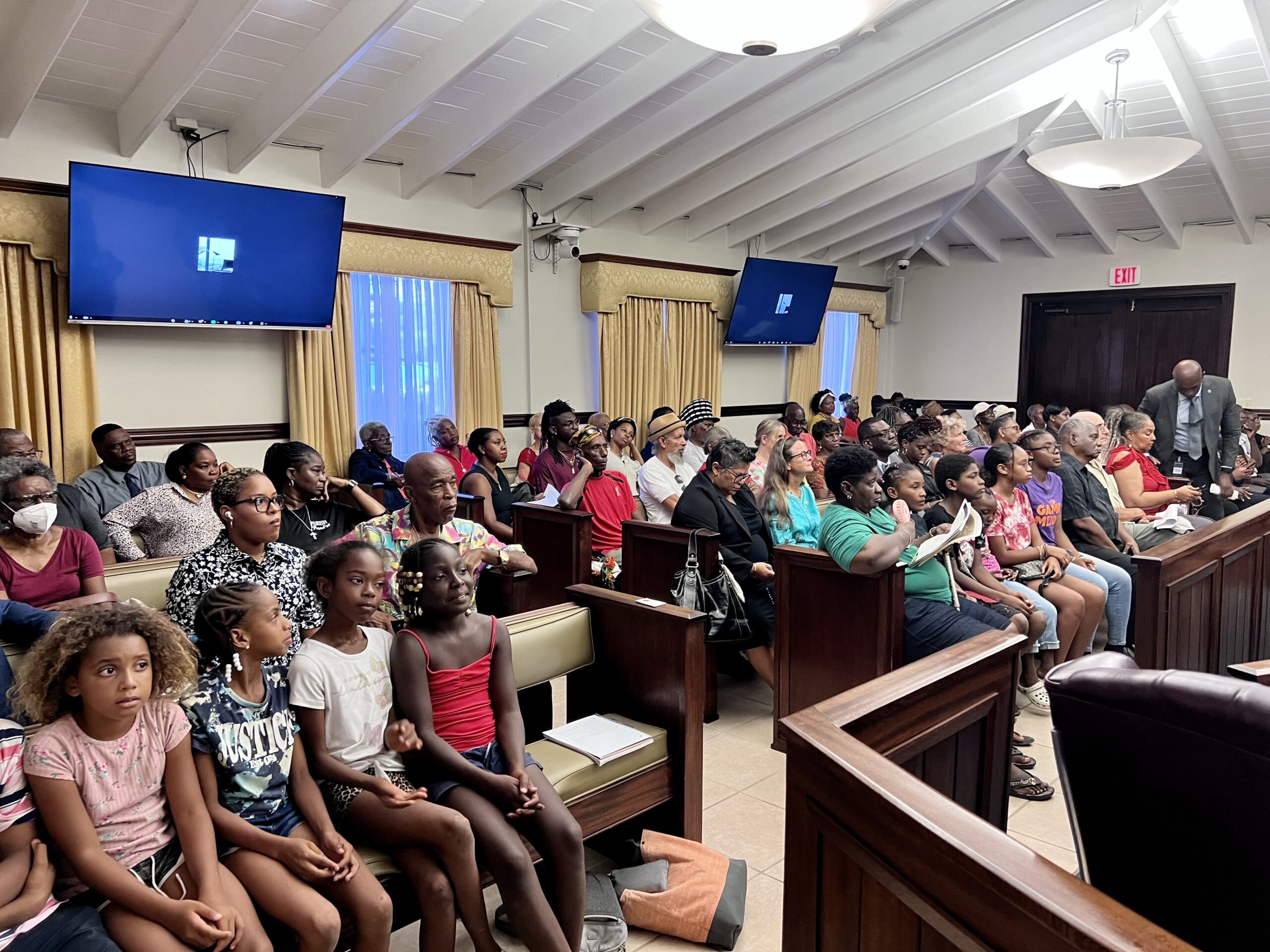
First to speak on behalf of the swap was Commissioner of Education Dionne Wells-Hedrington, who said FEMA has agreed to fund 90 percent of the costs of reconstructing a new school. Students at the K-8 Sprauve School have been attending classes in temporary modular units since Hurricane Irma struck in 2017. The new campus would include a hurricane shelter, a public meeting space, and athletic facilities.
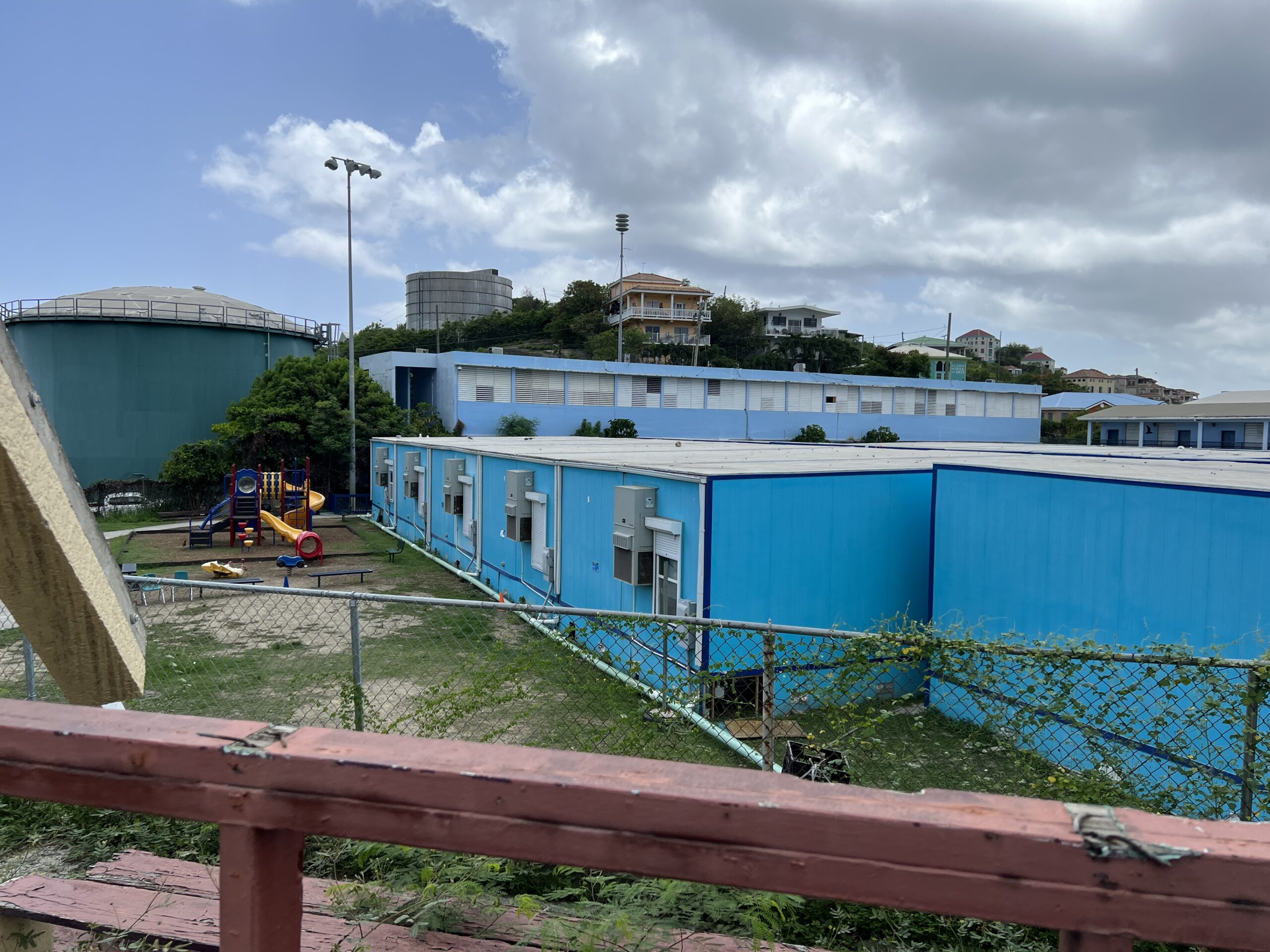
“The stars are aligned. The historic moment is now. We cannot let this chance slip through our hands,” she said.
St. Thomas and St. Croix both have two public high schools, while St. John has no public school to serve students in grades 9-12. “We need equity,” Wells-Hedrington said.
Wells-Hedrington spoke about her own challenge as a student commuting from St. John by ferry to attend high school on St. Thomas. “I’m a witness. I was a student, educator, principal, assistant superintendent, operations chief, and now the commissioner.”
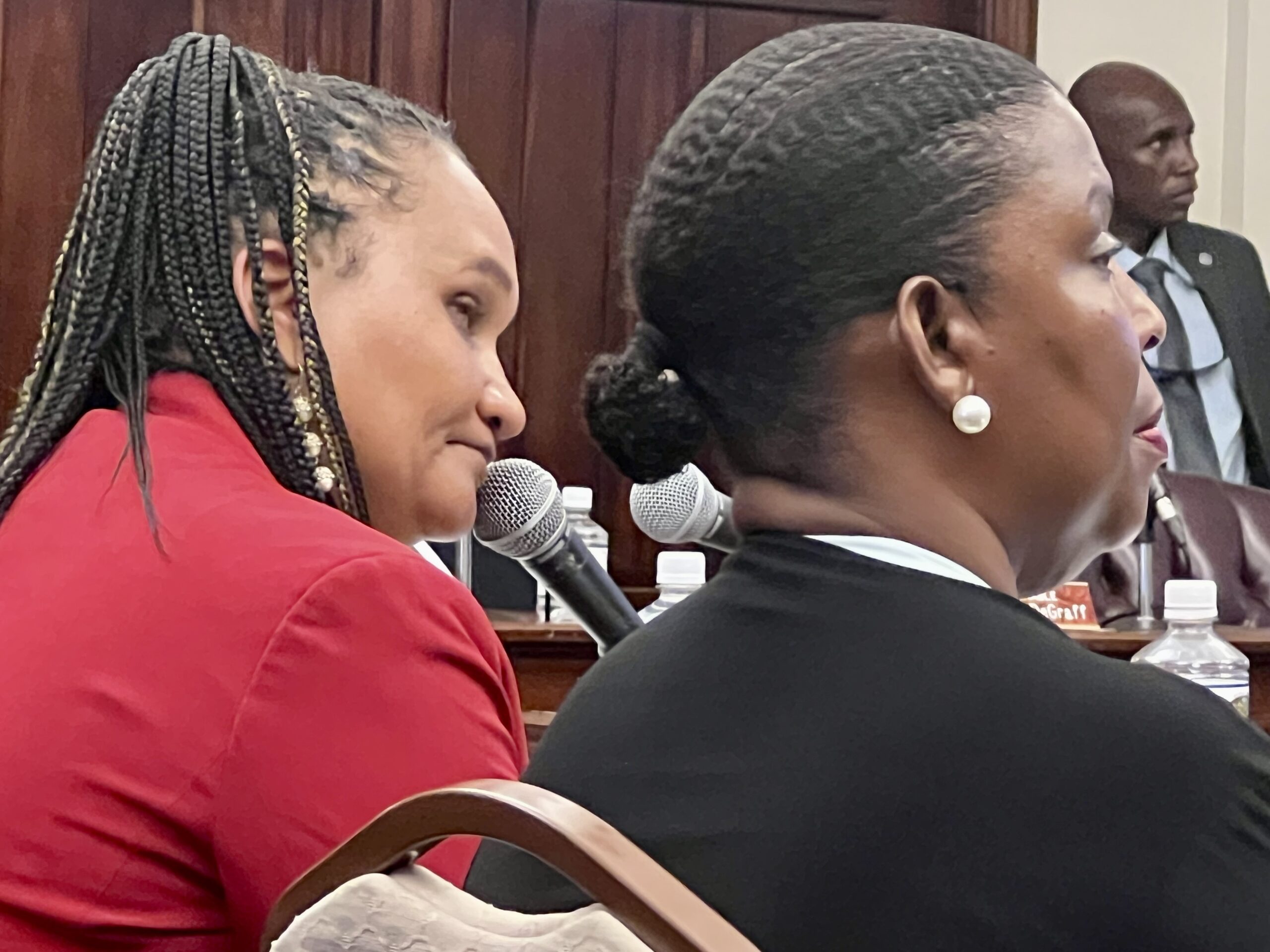
She said the absence of a high school on the island prevents students from partaking in extracurricular activities, decreases parental involvement, and leads to students dropping out because of the difficulties of the long commute.
Sen. Angel Bolques, who described himself as a “seventh-generation St. Johnian,” also commuted to attend school on St. Thomas. He estimated the government has spent nearly $1.4 million to cover the costs of ferry tickets for commuting students over the past 10 years.
“When I ask students if they want a high school on St. John, one hundred percent say they do,” said Bolques. “What is the cost of doing nothing? This is a stalemate.”
Sen. Donna Frett-Gregory asked Wells-Hedrington why the reconstruction of the St. John school, which will serve hundreds of students, was being planned before the reconstruction of the damaged Charlotte Amalie High School, which serves thousands.
Wells-Hedrington said CAHS includes 16 buildings, whereas the Sprauve School included five, so the damage assessment could be completed more easily. “They’re all priorities,” she said.
Sen. Kenneth L. Gittens asked about the cost of reconstruction of the Sprauve School on St. John.
“I can’t give you a dollar figure until it’s finalized. We have to put it out to bid,” Wells-Hedrington said.
Several senators questioned whether the proposed properties for the exchange were of equal value, which led to Sen. Marise James saying, “Let’s not focus so much on property values. Let’s focus on the value of a child’s education.”
Sen. Carla Joseph asked if the Education Department has the personnel to operate a K-12 school on St. John.
Wells Hedrington replied, “Yes, we will adjust accordingly. With technology and distance learning, we don’t need teachers to be physically present in the classroom.” She said plans call for making the new school a magnet school to attract students from St. Thomas.
Thirty percent of the school has been provisionally designed and could accommodate around 460 students, according to Education Department Architect Chaneel Callwood. Of the 11-acre site, five acres will be used immediately for school construction, three will be held in reserve for future use, and three acres with historical ruins — including a slave village and burial ground — will be preserved as “sacred space.”
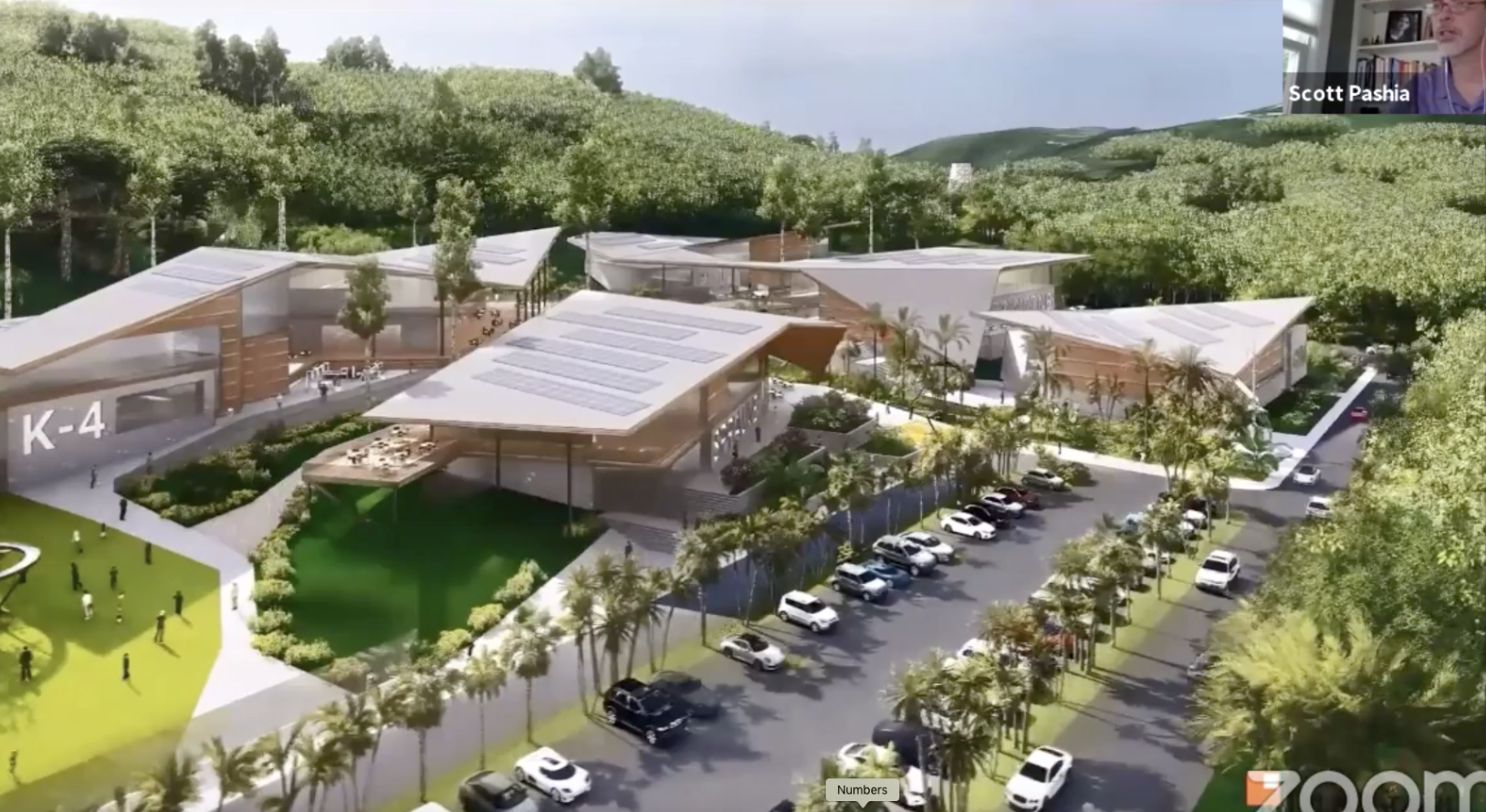
Several senators said that they had mixed feelings about the presence of the National Park on St. John, which currently controls around 60 percent of the land on the island. The exact acreage remains unclear as no one from the NPS attended the Senate hearing, which was noted by several senators.
Several testifiers spoke of a long series of injuries by the park, including the park’s failure to build roads to provide access to landowners’ property within the park boundaries.
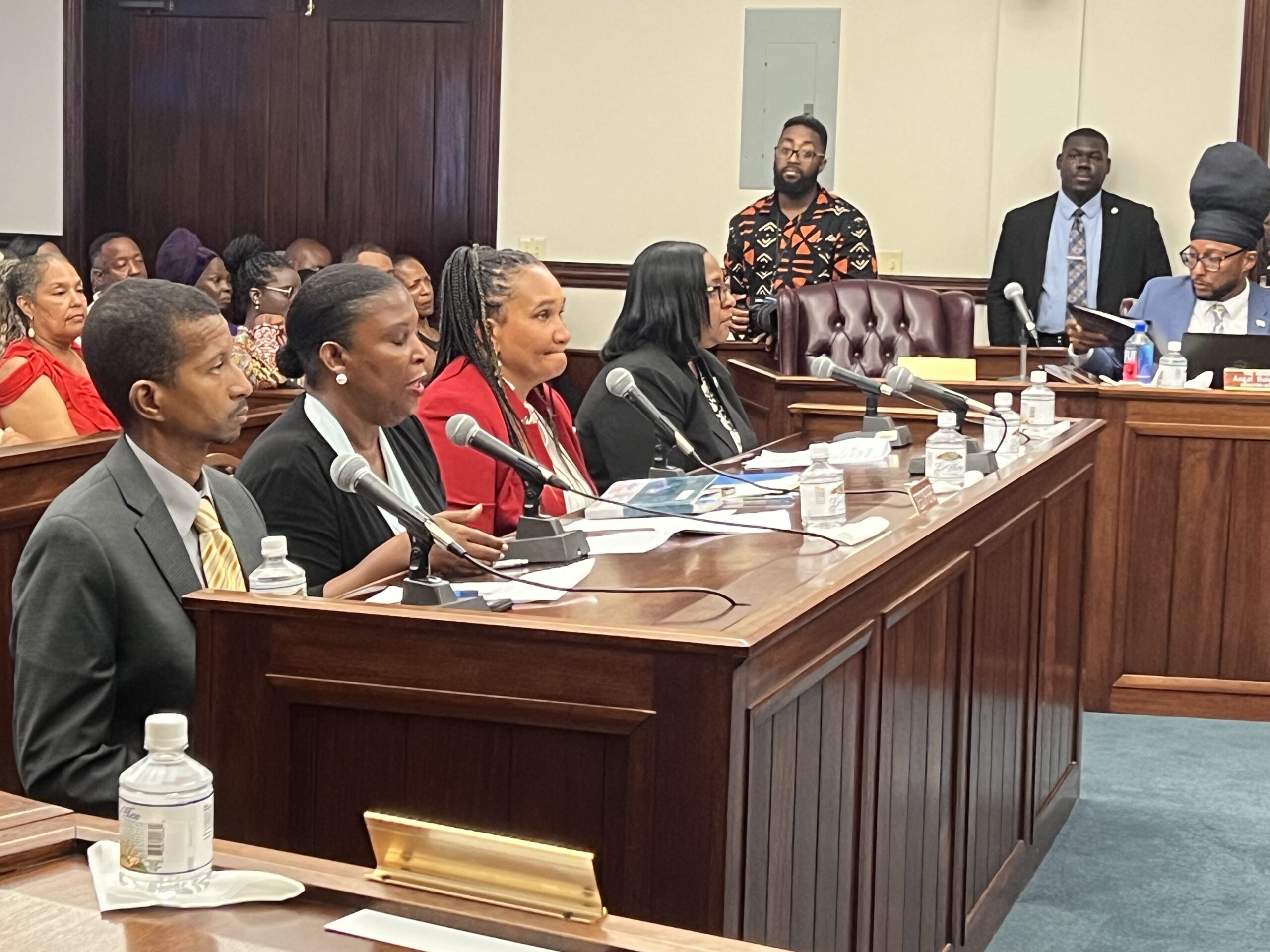
Sen. Ray Fonseca said in response, “This land swap deal ain’ gonna resolve your land access issues.”
“The NPS is a blessing and a curse,” said Senate President Novelle Francis Jr., who then wondered whether those St. Johnians who deeded their land to the park would have eventually sold out to resort developers. “What would St. John look like without (the park)? Another concrete jungle?”
Several ancestral St. Johnians, including former Sen. Almando “Rocky” Liburd and Clarence Stephenson, spoke in favor of the swap for the good of the children in spite of issues with the National Park.
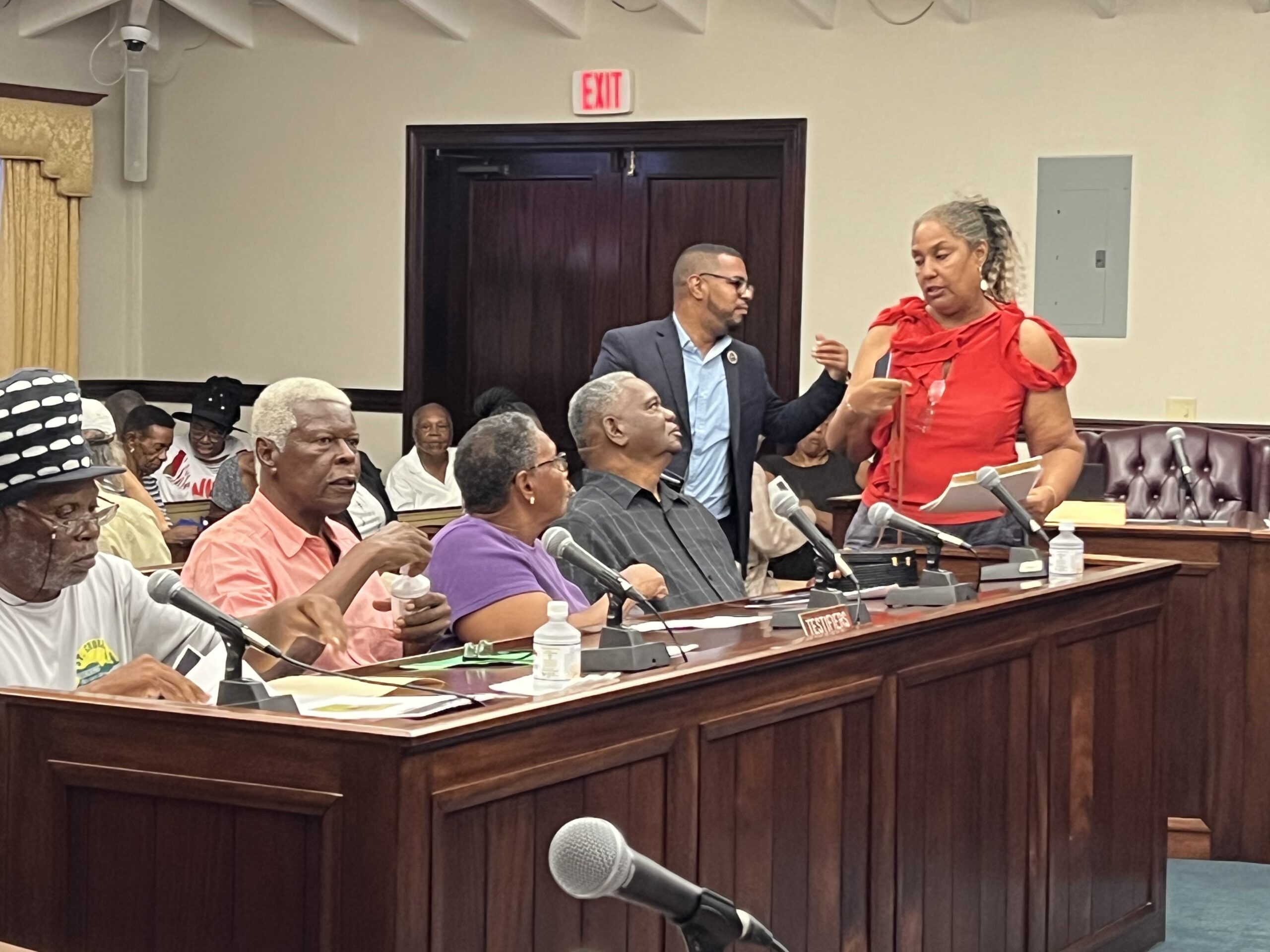
Yvonne Wells, a retired educator (and the mother of Dionne Wells-Hedrington), said, “Like everything, there is a good and a bad. Most of the land slipped through the hands of our elders. It’s just how it is.”
Wells said it would be great if the NPS would simply give the land in Catherineberg, but the law prevents that. “Now we have the opportunity of a lifetime. We need to put aside our own picayune differences. The governor might have bypassed your august body,” she said to senators who were disturbed that alternatives were not presented to them for consideration. “He might have overstepped his boundaries. Do not let us lose sight of getting a school for our children.”
Several other ancestral St. Johnians spoke passionately against the land swap.
Julian Harley, a former island administrator who attempted to acquire the Catherineberg property for a school decades ago, said his attempt was stymied by Catherineberg residents who didn’t want a school near their upscale homes.
“The NPS needs to step up and do the right thing (and donate the land).” Referring to a proposal in 1962 to take property by eminent domain from St. Johnians who didn’t sell to the park, Harley said, “It reminds me of when Sen. Moorehead fought to keep the island from being condemned.”
Retired UVI professor Gilbert Sprauve said, “The NPS needs to yield back those 11 acres and back off from taking Whistling Cay from our hands.”
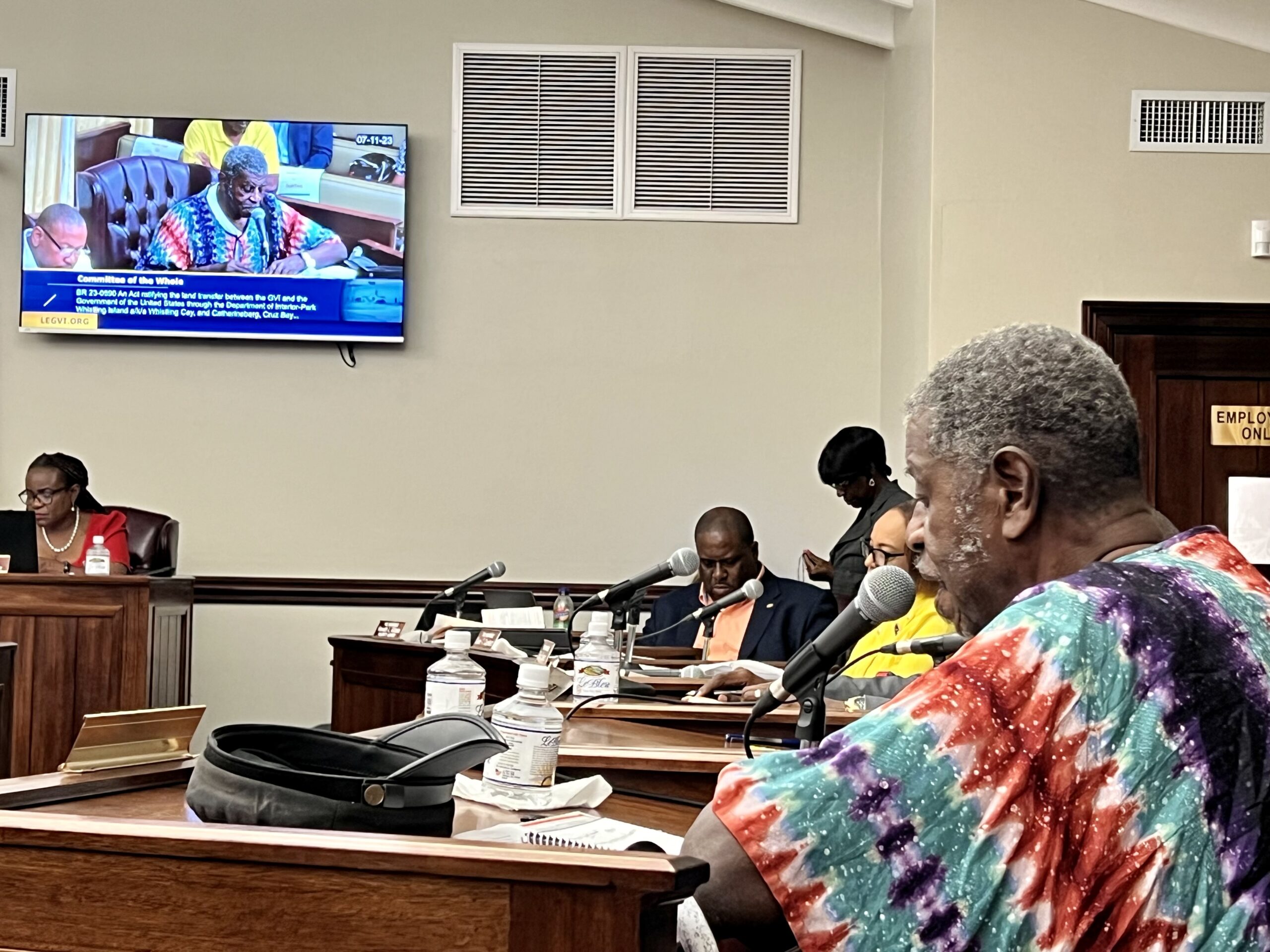
Later in the hearing, Sprauve said his extended family still owns property in Estate Adrian near Catherineberg; they would “be willing to get the ball rolling” to determine whether a suitable site could be identified for a school. He added that the process could take a year.
St. John native Ida Smith also said that land in the John’s Folly area could be found for a school if students and teachers were willing to do a “reverse commute.” Members of the Matthias, Benjamin, and Meyers families were open to discussing it, she said.
Hadiya Sewer spoke of “colonialism and the inequitable power dynamic” between the federal government and the territory that has changed St. John over the generations. The results have included the decline in farming, a real estate boom, cultural erasure, disputes over road access to landlocked properties, dependency on tourism, and prioritizing the well-being of tourists as opposed to locals. “We St. Johnians have been displaced enough. It’s not just a St. John issue. It’s a Virgin Islands issue.”
Coral Bay resident David Silverman suggested swapping submerged lands — land in bays underwater — for Catherineberg. He said the issue of the land swap should be decided by ancestral St. Johnians.
Sen. Alma Francis Heyliger questioned the legality of the swap, leading to a sharp rebuke by Francis.
The question was later addressed by Lorelei Monsanto, who cited an opinion by Amos Carty, chief legal counsel for the Legislature.
According to Carty, the legislation proposed by the governor would need to be amended. Title 31, section 205 (f) states that “No portion of the ‘shoreline’ may be sold, leased, or otherwise disposed of by the Government of the Virgin Islands; excepting only concession stands.” But after citing precedent, he concluded, “This minor bureaucratic error is not fatal to the land exchange.”
But rewriting the legislation, and the doubts raised at the hearing, could lead to a delay in a Senate vote.
And delays could be costly.
Chaneel Callwood said the Federal Emergency Management Agency has made a fixed-cost offer that the Education Department would have to work within if the legislation is approved. With every delay, construction costs will inevitably rise because of the price of materials, inflation, possible natural disasters and supply chain issues. That may mean some of the school buildings may not get built if the project doesn’t move forward in a timely manner.
Several senators, including Francis, said it was time to approve the land swap now. “Don’t let the perfect be the enemy of the good,” he said.





